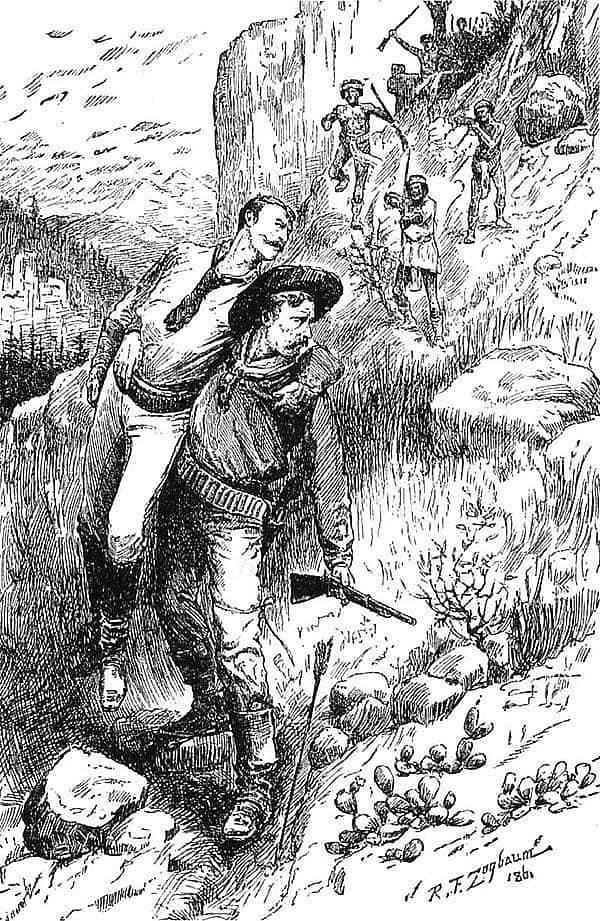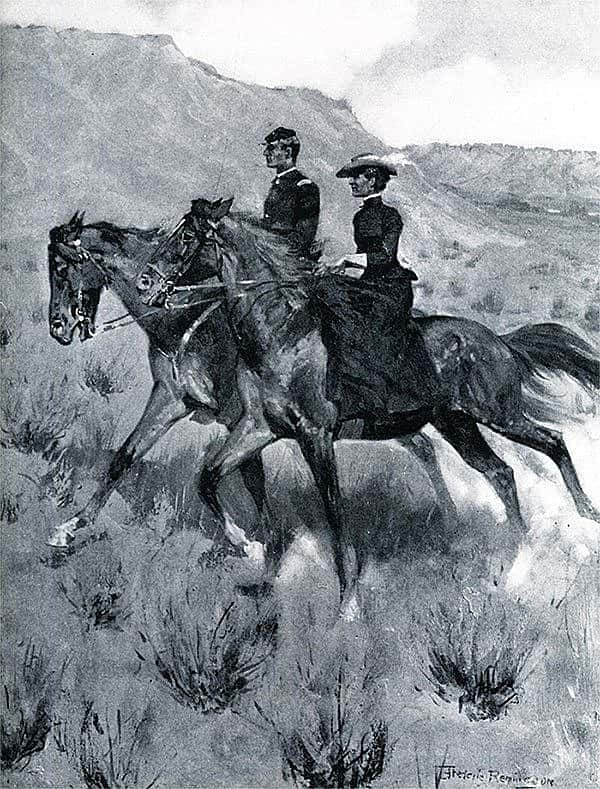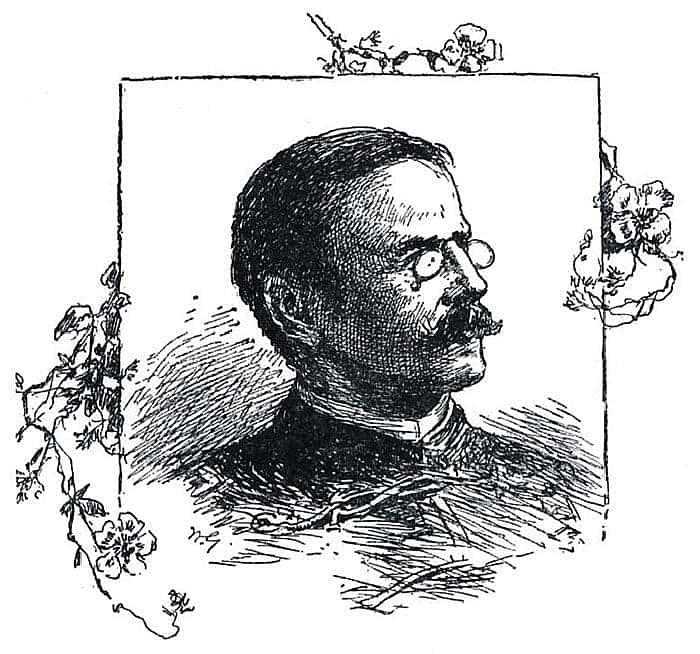Novel Adventures—The Life and Writing of Charles King – Points West Online
Originally published in Points West in Winter 1999
By Nathan Bender
Former Housel Curator, McCracken Research Library
Ed. note: This is the first of three posts tracing the evolution of the public’s perception of the cavalry in the West from novelist Charles King to short story and script writer James Warner Bellah whose stories were then translated to the screen by director John Ford.

It was a time of high romance, when noble causes were openly fought with force of arms and righteous conviction. Character virtues such as courage, honor and strength were prized and rewarded, while traits such as cowardliness, duplicity and thievery were despised and punished. Modest soldiers with hearts pure and brave in battle became “lost at sea” in formal parlor rooms vying with a rival ally for the attention of a doe-eyed sweetheart. Elegant women in beautiful evening gowns would swoon and faint into the strong arms of their heartthrobs as battles of a different passion raged in the darkness outside. Such was the time of General Charles King.
The McCracken Research Library at the Buffalo Bill Center of the West has in its holdings the Paul Hedren collection of Charles Bird King books, photographs, and correspondence. The Hedren Collection is the most complete Charles King literary collection in existence and was acquired by the Library in 1998.
The literary novels of Charles King (1844 – 1933) are ones of Victorian ideals, morals and views played out on western frontiers, the Civil War, and the Spanish Philippines. His often melodramatic stories are based on personal adventures and experiences with detailed observations and opinions arising from specific times and places. Publishing over 60 novels and numerous short stories, King was a popular author in his day, yet today is known mostly for one title, Campaigning With Crook, an extended historical essay based on his journal of the Big Horn and Yellowstone Expedition of 1876, fighting Sioux and Cheyenne on the northern plains. The following passage from this book exemplifies his literary style, writing from the perspective of an officer of the U.S. 5th Cavalry confronting the Cheyenne in battle at Warbonnet Creek:
Savage warfare was never more beautiful than in you. On you come, your swift, agile ponies springing down the winding ravine, the rising sun gleaming on your trailing war bonnets, on silver armlets, necklace, gorget: on brilliant painted shield and beaded legging: on naked body and beardless face, stained most vivid vermillion. On you come, lance and rifle, pennon and feather glistening in the rare morning light, swaying in the wild grace of your peerless horsemanship; nearer, till I mark the very ornament on your leader’s shield. And on, too, all unsuspecting, come your helpless prey. I hold vengeance in my hand, but not yet to let it go. Five seconds too soon and you can wheel about and escape us; one second too late, and my blue coated couriers are dead men.
King’s military career became the touchstone of his many novels, as he served in five military campaigns from his early days in the Civil War through the Indian Wars in Arizona and on the Great Plains, to his promotion to Brigadier General of Volunteers during the Spanish American War and the Philippines Insurrection, to his training of Wisconsin National Guard troops during the first World War.
As King was a highly regarded writer in his day, his books boast the talents of such artists as Frederic Remington, Rufus Zogbaum, A.F. Harmer, E. W. Deming, and many others. These images capture the spirit of adventure and romance so typical of King, and provide a clear window into his stories.



Post 106
Written By
Nancy McClure
Nancy now does Grants & Foundations Relations for the Center of the West's Development Department, but was formerly the Content Producer for the Center's Public Relations Department, where her work included writing and updating website content, publicizing events, copy editing, working with images, and producing the e-newsletter Western Wire. Her current job is seeking and applying for funding from government grants and private foundations. In her spare time, Nancy enjoys photography, reading, flower gardening, and playing the flute.

